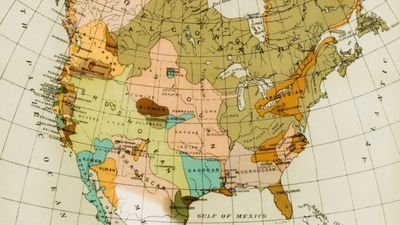
Socialization: How Humans Learned to Interact With Others
The evolution of how we work and play well with others
News Source
- Science: “How Humans Became Social”
In a world where evolutionary scientists presuppose everything resulted from the random interaction of elemental parts, many puzzle not over whether social behavior evolved but how. Thus evolutionary anthropologists led by Oxford’s Susanne Shultz have challenged conventional evolutionary thinking with a novel proposal.
Although her study published in Nature concerns primates, its intent is to explain the origins of human society. The authors write, “Explaining how primate social systems evolved is central to understanding the evolution of our closest relatives and the emergence of early human social behavior.”1
The evolution of social patterns in birds and bees has been pretty well worked out in the minds of evolutionists. They generally believe bird and bee social behaviors evolved stepwise from solitary foraging to pair-bonding to complex groups. Many anthropologists assume the same for primates, but Shultz wondered if perhaps large groups first came together for protection and then evolved pair-bonding later.
Her team correlated social patterns of 217 primate species with their positions on the phylogenetic tree. “This strong phylogenetic signal,” they write, “allows a reconstruction of the evolutionary pathway leading to extant primate grouping patterns.”2 Whatever social structure exists among creatures lowest on the evolutionary tree must have evolved first.
By matching what is presumed about the 74-million-year evolution of primates to what is observed in today’s primates, Schultz’s team determined primates formed large co-ed groups about 52 million years ago when monkeys and apes diverged from the ancestors of lemurs. Advanced social patterns like New World titi monkey couples and gorilla harems evolved 16 million years ago. UCLA anthropologist Joan Silk is impressed, saying, “I was really quite struck with what a different picture [it] gives us. [Some] theoretical models will have to be revised.”
The phylogenetic tree is a product of imagination. Therefore, the conclusions from this study, being completely based on it, are of no significance whatsoever.
Biblically, we have no basis for knowing how primate behavior may have changed over time, but it cannot be determined by comparison with a fanciful phylogenetic tree. God created each kind of animal, designing them all to reproduce after their kinds. And while diversification within kinds occurs, new kinds of animals do not evolve. Such evolution has never been observed and scientifically should not be expected since no mechanism exists for multicellular organisms to acquire genetic information to become new kinds of organisms. The phylogenetic tree is a product of imagination. Therefore, the conclusions from this study, being completely based on it, are of no significance whatsoever. Fortunately, we do not need to understand primate society to figure out our own.
The Bible does tell us a great deal about how human society came about! We did not develop our social structures through evolution from primitive ancestors, and we do not need primate analogues to understand our social constructs. On the sixth day of creation, about 6,000 years ago, God created Adam and Eve and declared them the first married couple. Marriage was God’s idea as Jesus confirms in Matthew 19:4. They were not brute animals but were responsible, mature, intelligent humans made in God’s image. God also instructed Adam and Eve to have children. The family was God’s idea, and much of the Bible deals with the responsibilities incumbent upon family members.
People evidently organized themselves into more complex groups as soon as there were enough people to do so. We see in the fourth chapter of Genesis that Cain, the first child ever born, built a city. Noah’s descendants, in defiance of God’s instructions to “fill the earth,” (Genesis 9:1), pursued their ideal of a unified world government while building the tower of Babel in the years after the Flood. God confused their languages and dispersed them into smaller groups to break the power of their unified rebellion. Acts 17:26–27 alludes to God’s purpose for dividing people into many nations. “And He has made from one blood every nation of men to dwell on all the face of the earth, and has determined their preappointed times and the boundaries of their dwellings, so that they should seek the Lord, in the hope that they might grope for Him and find Him, though He is not far from each one of us” (emphasis ours). A powerful unified ungodly society would hinder people from seeking the Lord “who desires all men to be saved and to come to the knowledge of the truth” (1 Timothy 2:4).
Human social behavior did not evolve from brutish roots. And while history adds to our knowledge of cultural distinctions, we cannot interpret human history by analysis of primate society.
Further Reading
- Get Answers: Human Evolution, Bible History
For More Information: Get Answers
Remember, if you see a news story that might merit some attention, let us know about it! (Note: if the story originates from the Associated Press, FOX News, MSNBC, the New York Times, or another major national media outlet, we will most likely have already heard about it.) And thanks to all of our readers who have submitted great news tips to us. If you didn’t catch all the latest News to Know, why not take a look to see what you’ve missed?
(Please note that links will take you directly to the source. Answers in Genesis is not responsible for content on the websites to which we refer. For more information, please see our Privacy Policy.)
Footnotes
- Susanne Shultz, Christopher Opie, and Quentin D. Atkinson, “Stepwise Evolution of Stable Sociality in Primates,” Nature 479, no. 7372 (November 9, 2011): 219–222, doi:10.1038/nature10601.
- Ibid.

Answers in Genesis is an apologetics ministry, dedicated to helping Christians defend their faith and proclaim the good news of Jesus Christ.
- Customer Service 800.778.3390
- Available Monday–Friday | 9 AM–5 PM ET
- © 2025 Answers in Genesis



